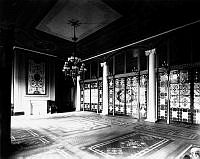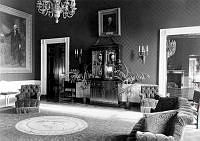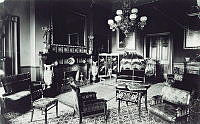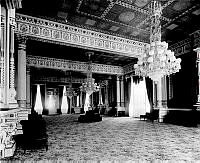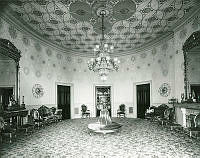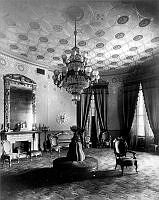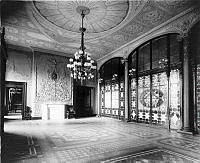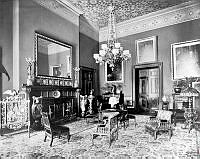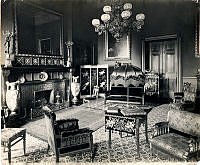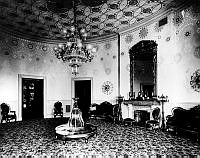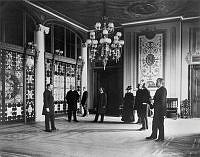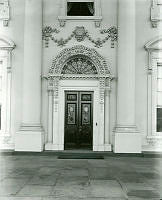Entrance Hall Showing the Tiffany Screen, Benjamin Harrison Administration
This photograph of the Entrance Hall by Frances Benjamin Johnston was taken in 1889 during the Benjamin Harrison administration. The Entrance Hall is located just beyond the front door of the North Portico in the Executive Mansion. In 1882 Chester A. Arthur commissioned the interior designs and decorative arts of Louis Comfort Tiffany to make the Entrance Hall more welcoming. In this photograph, Tiffany's colored glass screen was placed to make the hall more warm and welcoming to visitors as well as to keep the cold, winter draft of the front door from the drawing rooms beyond.
